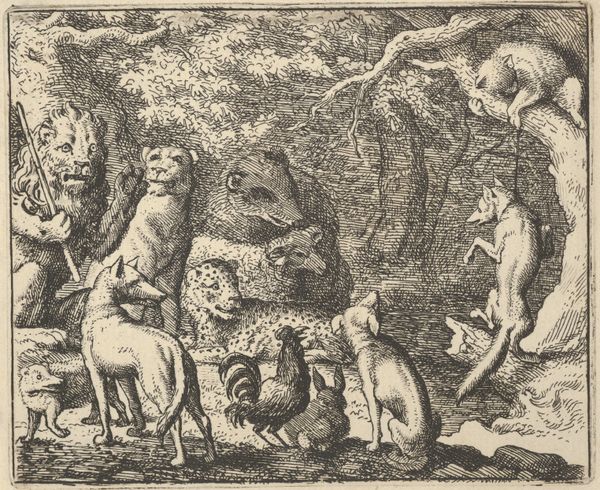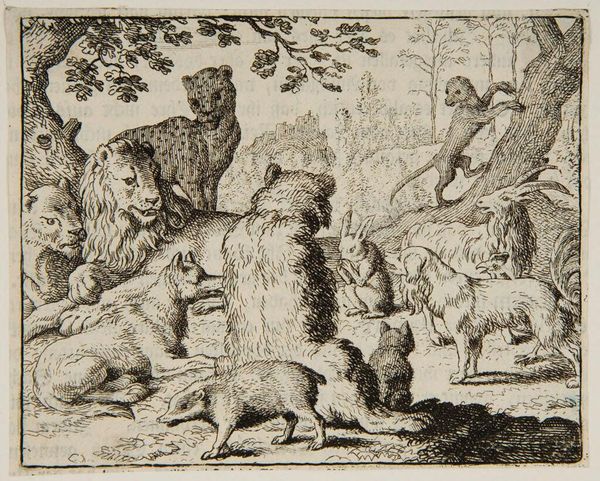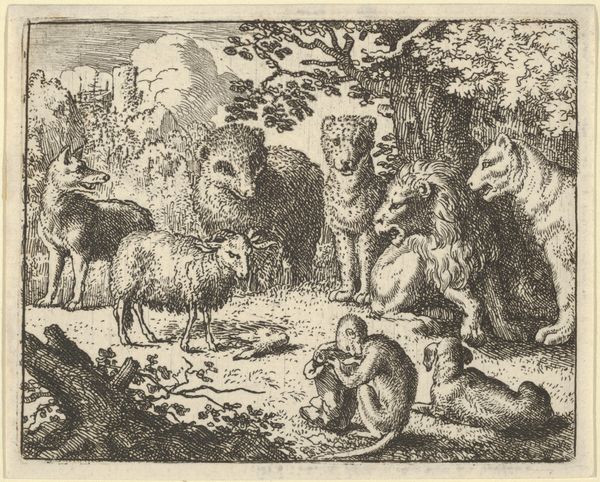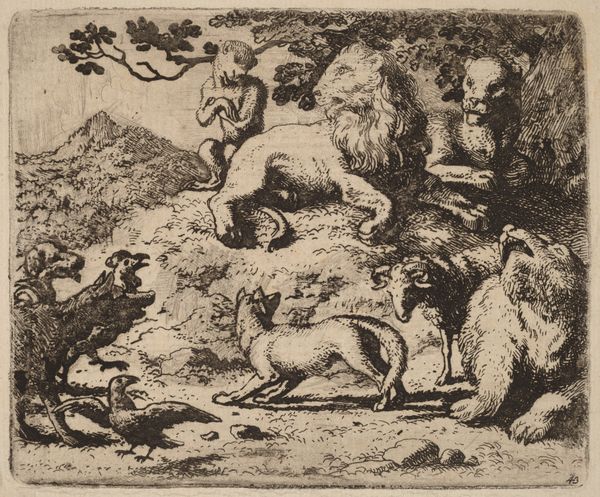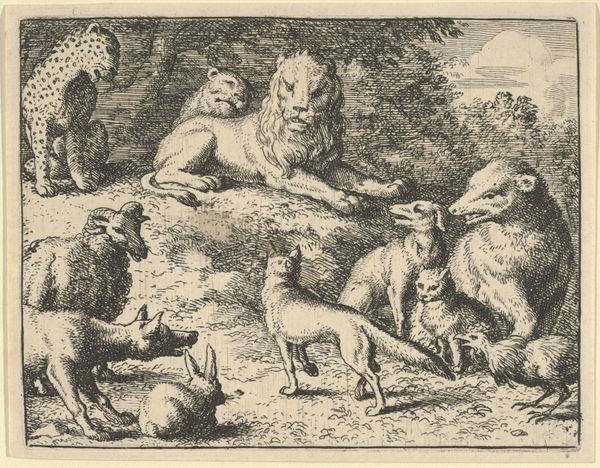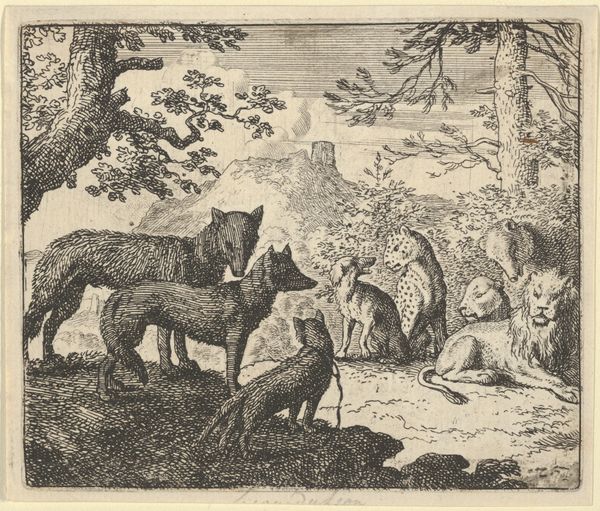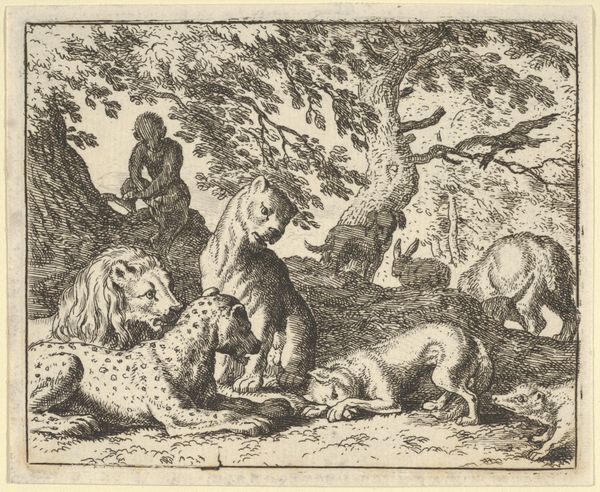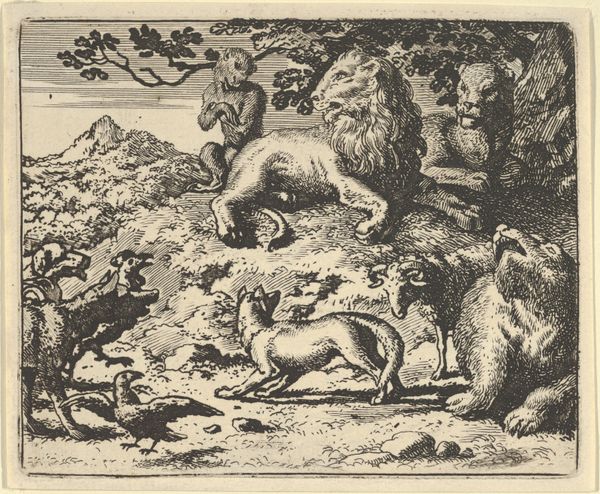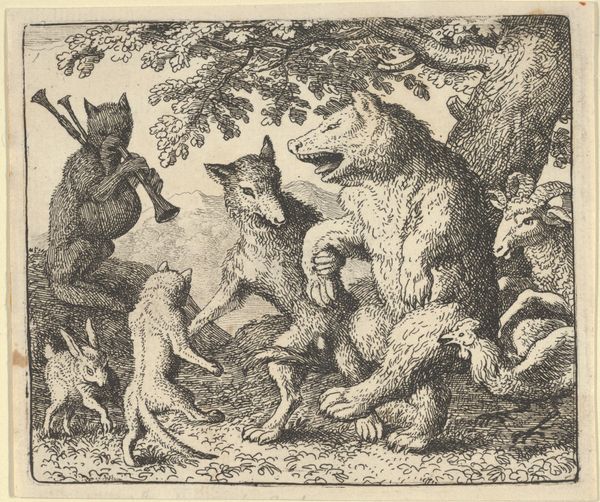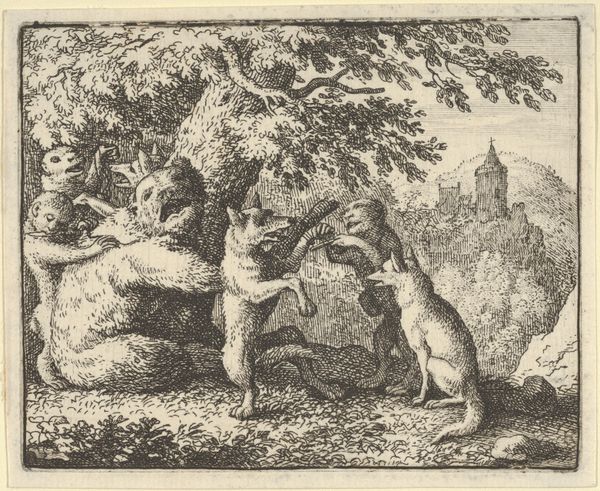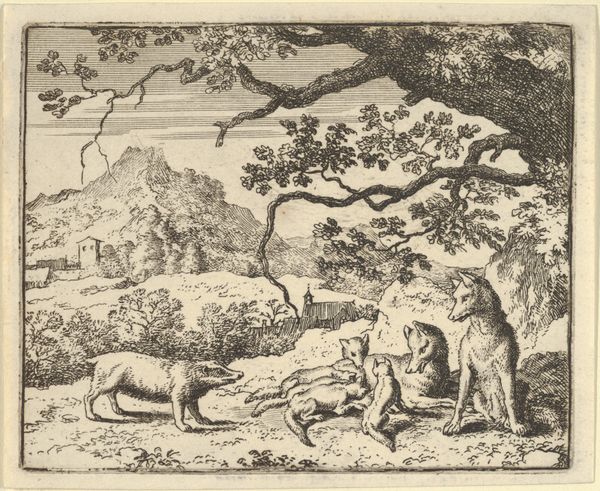
The Lion Orders All the Animals to Follow Him to Renard's Burrow from Hendrick van Alcmar's Renard The Fox 1650 - 1675
0:00
0:00
drawing, print, engraving
#
drawing
#
narrative-art
#
pen drawing
#
dutch-golden-age
# print
#
landscape
#
figuration
#
line
#
engraving
Dimensions: Plate: 3 3/4 × 4 1/2 in. (9.6 × 11.5 cm) Sheet: 4 1/8 × 4 13/16 in. (10.4 × 12.3 cm)
Copyright: Public Domain
Editor: This engraving, "The Lion Orders All the Animals to Follow Him to Renard's Burrow," made between 1650 and 1675 by Allart van Everdingen, reminds me of old fables. The density of animals crammed into the scene is striking. What do you see in this piece? Curator: Immediately, the artist’s intricate use of line becomes apparent. Observe how the varying densities and directions of the hatching create depth and texture. Notice the strategic deployment of light and shadow, achieved purely through line work. The artist manipulates the viewer’s perception of form and space. Editor: It almost feels like a competition to see how many lines they can fit in! Do you think the tight linework detracts from readability? Curator: Not at all. Note how the strong horizontal lines in the foreground ground the scene. See how they contrast with the more delicate, almost whimsical lines that define the leaves of the trees. It’s through this very contrast, this controlled variation, that the artist maintains clarity and dynamism within the composition. Editor: I can appreciate the variation now that you point it out, but what about the composition? It's crowded. Curator: The density serves a purpose. Observe the arrangement – the lion and its court occupy the left, establishing a hierarchy. How does the composition contribute to the narrative, even without prior knowledge of the Renard the Fox tale? Editor: Interesting. I see now how the line and composition work together. Thanks for walking me through it! Curator: A pleasure. Examining the intrinsic visual elements allows us to construct our own readings, deepening our understanding of artistic intent and impact.
Comments
No comments
Be the first to comment and join the conversation on the ultimate creative platform.
